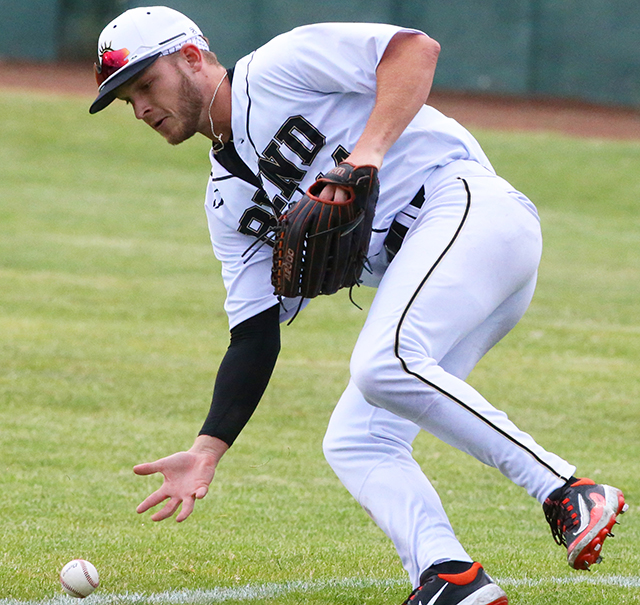Gimme putts are nothing to concede
Published 12:00 am Sunday, May 3, 2015
SAN FRANCISCO — Bubba Watson’s opponent was eyeballing a 3-foot par putt Wednesday, and Watson was eyeballing his caddie, Ted Scott. It was the opening day of the World Golf Championships match-play event at Harding Park and Watson, unsure if he should concede the putt to Miguel Angel Jimenez, asked Scott for his opinion.
The distance, Scott noted, was longer than the length of the grip of Watson’s putter. In addition, it was downhill, which made it tricky. So Scott invoked what he calls “the friends rule” and advised Watson to make Jiménez putt out. Watson did as Scott suggested, Jimenez missed his attempt, and five holes later, Watson closed out the match.
Did Watson do the right thing? “You don’t know the right answer,” he said. “There is no right answer.”
In pro football, an opponent would not dream of conceding a field-goal kicker’s chip shot. In basketball, no free throw, despite its name, is ever conceded. And yet in match-play golf, opponents are continually counterpoising their consciences and their competitiveness.
Most players hew to the spirit of the rule, which has served many purposes. It was a way around the stymie rule, in which a player faced with an opponent’s ball in his path had to try to putt around it or chip over it. It also helped speed up play and advance sportsmanship.
According to Victoria Student of the U.S. Golf Association Museum, the phrase “concede putts” made its first appearance in the Rules of Golf in 1909, with the game’s guardians recommending against it. Eighteen years later, a Golf Illustrated contributor blamed “generous British golfers” for the custom.
Sometimes magnanimity has nothing to do with it. Speaking hypothetically, Rory McIlroy, the world No. 1, said: “You know, you could be quite generous at the start, and then when he’s not expecting it, just say, ‘Just putt that one for me.’ So there’s a little gamesmanship going on.”
McIlroy added, “You might make them putt something just to get under their skin a little bit, get into their head.”
In McIlroy’s opening match, his opponent, Jason Dufner, made him hole a putt of just over 2 feet. Dufner had fallen behind and was looking for any opening to get back in the match, so McIlroy took no offense.
He stepped up and holed it. But what if he had missed? In a 2013 Presidents Cup match, the Australian Jason Day made his opponent, Brandt Snedeker of the United States, hole a putt of roughly the same distance. Day said Snedeker’s caddie sidled up to his bag man and said, “You know he’s the best putter in the world.”
Snedeker missed the putt, proving that the only sure tap-in is the one you tap in.
“I guess guys get a bit touchy,” Brooks Koepka said. “It doesn’t matter, as long as the ball goes in, whether he gives it to you or you tap in a 2-footer. It should be good, anyway.”
At the 1969 Ryder Cup, Jack Nicklaus conceded a 2-foot par putt to his opponent, Tony Jacklin, to halve the final match and create the first tie in the event’s history. (The United States retained the cup.) On the other side of the high road proudly stood Walter Hagen, an 11-time major winner who was notorious in the 1920s for conceding short putts to his opponent early, then making him hit them later in the match when the pressure was fierce and his opponent had fallen out of practice hitting 3-footers.
More goes into conceding a putt than meets the eye. Day, the defending champion of the match-play event, said there was much to consider beyond the score and the timing. How well is your opponent putting? Does he play better when he is happy or angry?
In 2013, when the tournament was held at Dove Mountain outside Tucson, Arizona, Day learned not to poke a slumping opponent. In the second round, he faced Russell Henley, then a PGA Tour rookie whom Day did not know well. Day grabbed the lead and then refused to concede a couple of 2-footers to Henley, who seemed to grow more irritated with each short putt he was forced to hole.
“He turned around and he was getting angry,” Day said, referring to Henley, who began playing better. Day had to go 19 holes to beat him.
“Now I know he’s the kind of player that if you get him angry, he plays good,” Day said, adding: “So never again with Russell. I’ll probably give him the putts.”
Because golfers are opposing each other in match play and not just battling the course, the format can cause the most wholesome dispositions to curdle. In match play, Day undergoes a transformation that calls to mind his countryman Hugh Jackman morphing into Wolverine in the X-Men movies.
“Kind of tough to play against; don’t give up as many putts as I should,” Day said. “But that’s how it is. You’re out there to do the job, and that’s to beat the guy that is across the tee box from you. For some reason, when it comes to match play, I kind of turn into a different player. I’m still trying to work it out.”
Day’s opponents have tried to freeze him with icy stares after he made them putt from inside 2 feet. And make no mistake, “I’d make Tiger Woods putt a footlong putt,” Day said, laughing.
He does not understand why players get piqued by that. In every other PGA Tour event, it is a matter of course that players have to putt out. So why should anyone care if they are forced to hole the same putts in match play? The way Day sees it, to react to having to putt out is to essentially concede a psychological advantage.
“If you’re so angry about having a 1-foot, 2-foot, 3-foot putt that you have to putt in, you should just go out there and knock it in easy,” Day said.
Or as the Englishman Ian Poulter, who can get under an opponent’s skin like poison ivy, explained: “I couldn’t give a hoot if someone doesn’t give me a 2-foot putt because I’m not going to miss it, I shouldn’t miss it. So, therefore, why should I be frustrated if somebody doesn’t give you that putt? Always expect to hole your putt.”
Rickie Fowler fully expected to putt an 18-footer for par on the seventh hole of his match against Sergio García in last year’s event. He was surprised when García conceded the putt. They halved the hole after Fowler, in turn, conceded García’s 7-footer. After absorbing a 1-up defeat, Garcia said the concession was a kind of makeup call after he forced Fowler out of his playing rhythm on the previous hole by taking a long time to make two drops away from bees.
In match play, where does the cutthroat competitiveness end and the sportsmanship begin? For a gentleman’s game like golf, it is not just a question, it is a character referendum.
“I think there’s a certain length that it’s more courteous or polite to concede the putt,” McIlroy said.
Which leads to “the friends rule” enforced by Watson’s caddie, Scott. In his off-week games with his golf buddies back home in Louisiana, Scott explained, their rule of thumb is that if the length of the putt exceeds the length of a club grip, they have to hole out. No exceptions.
Friends or foes, it makes no difference to Jordan Spieth, the reigning Masters champion, who goes into every match expecting no favors. “I don’t want it given to me; I want to earn it,” he said. “I want to make my putts.”








